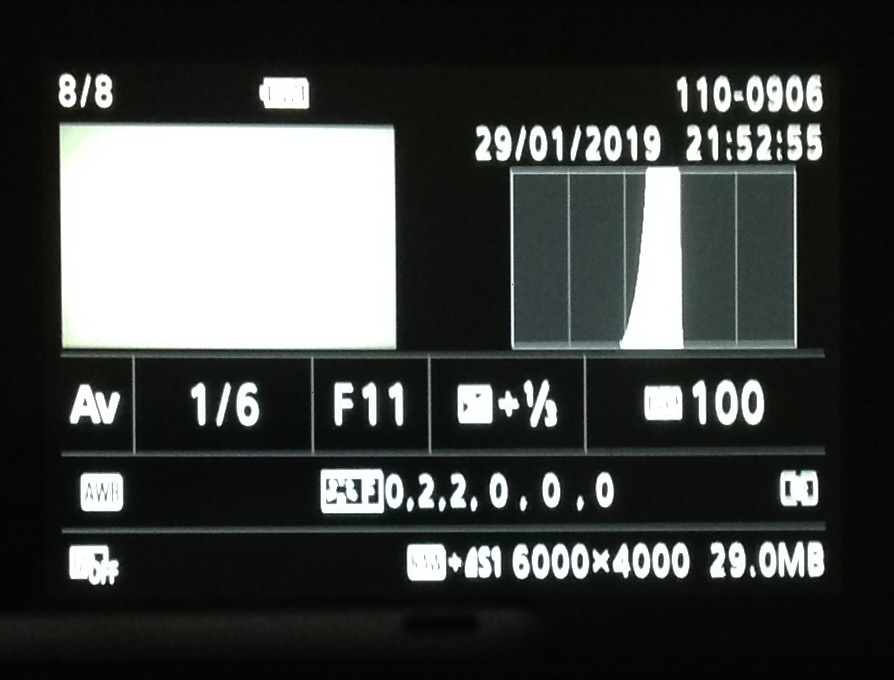What I find is when I develop my raw files at a given point in the day (when the day is bright) they look fine. Later they look decidedly dull. It to me seems to coincide with the monitor backlighting on my iMac in that as the day becomes more dull the brightness of the monitor reduces. My monitor is beside a window but there is no direct sunlight. Am I alone in this experience?
Hello Collin,
have a look at System preferences - Display - and make sure you unticked - "Automatically adjust brightness"Screen Shot 2019-01-28 at 17.06.11.pdf (330.0 KB)
Doh! How did I miss that! Thanks Sigi. Would you leave it set at maximum brightness? I am trying now to relate screen brightness to what I might see in a print.
Colin,
There is another issue to be considered. As the brightness of the room dims, the response of your eyes to color also changes; the entire spectrum shifts toward the reds. The reds will appear much deeper, - even black. In addition, your eyes sensitivity to brightness also changes; dim items will gradually appear brighter as your eyes adapt. This adaption to color and brightness takes about 20 minutes. So color and brightness edits made early in an early edit session will appear different than the same edits made later in the edit session.
I have my computer in a shaded room. The blinds are kept closed or adjusted to maintain a consistently dim lighting level. And I don’t do any contrast or color changes until 15-20 minutes into the editing session.
Calibration software proposes to set screen brightness to 100-120 lumen. On my iMac, this is at 50% of max. brightness. Your mileage may vary. If your screen is too bright, prints can turn out to be too dark. Try to find out what best fits your need.
Hello Collin,
I calibrated my screen with software from basiccolor and their recommendation is 50% on the imac
This is the part where I get totally lost. If I put my screen on 50% (and I am here in a well lit room from artificial light) a lot of my images lose their “sparkle”, they become flat looking. That presumably means I need to lift the highlights/brilliance a bit?
Have you callibrated your screen?
No  Probably need to go out and buy some kit? But how does that impact my question? Sorry I am being thick here but at least it is genuine ignorance.
Probably need to go out and buy some kit? But how does that impact my question? Sorry I am being thick here but at least it is genuine ignorance.
If your screen is not calibrated your edits will be based on wrong colors. I can only recommend to read and learn.
Like here: https://www.dpbestflow.org/color/color-management-overview
…this is how the issues begin. A bright monitor will display shadow detail that tend to be lost in printing. If you never print images and use the same monitor and settings forever, you can easily do whatever you like to make your images look good.
Calibrating your monitor and setting a reasonable brightness helps to make your image files display well on other systems too, be it print or projection or another display that cannot produce the brightness you need.
MacOs has means to calibrate the monitor manually, check the monitor settings in your system preferences application.
You can always download the open sourced DisplayCal and buy one of those calibrators they list as supported - second hand or new - and get going.
Really nice solution.
I use displayCal on my Mac plus an elderly Spyder Model 3. Anyway, you need to spend some money to get proper calibration. Then some more if you want profiles for your camera(s) and printer etc.
Again, monitor brightness is important because it also changes perception of colours.
I set the monitor background color to white and the brightness I work with and take a photo in an otherwise dark room, my eos m6/efm22 lens snaps the white at 100 ISO with f/11 and t=1/6. with awb.
Note: photo taken with old iPad handheld in order to get som live feeling blur 
Ahh i see
I’ve been using Lumariver Profile Designer to create DCP and ICC profiles for my cameras.
Works great.
All you need if Profile Designer and a colour chart. That’s not that expensive.
http://www.lumariver.com
There is a calibration kit as part of the mac OS. Go to Preferences>display>colour. There you will see a ‘calibrate button’ BUT you have to also depress ‘option’ to get the full kit. You can then create several ‘display profiles’, one for each lighting condition in which you might edit, eg ‘bright morning sun’ ‘rain’ ‘LED bulb’. In practice on my iMac 27" 5k, I find the latter a good default. BUT it depends on having a good quality bulb and no tungsten; or worse still none of those 1st generation ‘low energy’ bulbs. With poor skewed lighting it becomes impossible to get a calibration.
Thank you all. Some very useful information and advice there, as usual 
